
The 27th Fighter Squadron is a unit of the United States Air Force 1st Operations Group located at Joint Base Langley–Eustis, Virginia. The 27th is equipped with the F-22 Raptor.

The 1st Operations Group is the flying component of the 1st Fighter Wing, assigned to the USAF Air Combat Command. The group is stationed at Langley Air Force Base, Virginia. The 1st Operations Group is the oldest major air combat unit in the United States Air Force, being the successor organization of the 1st Pursuit Group. The 1st Pursuit Group was the first air combat group formed by the Air Service, American Expeditionary Force, on 5 May 1918.

The 26th Space Aggressor Squadron is a unit of the United States Air Force located at Schriever Air Force Base, Colorado. It is part of the 926th Group and is the reserve associate of the 527th Space Aggressor Squadron.

The 107th Fighter Squadron is a unit of the Michigan Air National Guard 127th Wing. It is assigned to Selfridge Air National Guard Base, Michigan and is equipped with the Fairchild Republic A-10 Thunderbolt II aircraft.

The 118th Airlift Squadron is a unit of the Connecticut Air National Guard 103d Airlift Wing stationed at Bradley Air National Guard Base, Windsor Locks, Connecticut. The 118th is equipped with the C-130H.
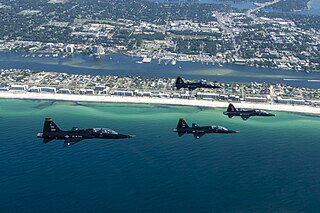
The 2nd Fighter Training Squadron, sometimes written as 2d Fighter Training Squadron, is an active United States Air Force unit, assigned to the 325th Operations Group at Tyndall Air Force Base, Florida.
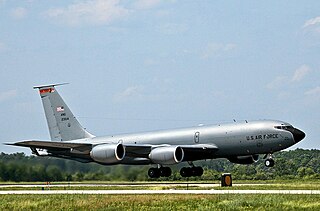
The 141st Air Refueling Squadron is a unit of the New Jersey Air National Guard 108th Wing located at McGuire Air Force Base, New Jersey. The 141st is equipped with the KC-135R Stratotanker.

The 43rd Fighter Squadron is part of the 325th Fighter Wing at Tyndall Air Force Base, Florida. It conducts advanced fighter training for F-22 Raptor pilots.

The 128th Airborne Command and Control Squadron is a unit of the Georgia Air National Guard 116th Air Control Wing located at Robins Air Force Base, Georgia. The 128th is equipped with the E-8C Joint STARS.

The 78th Attack Squadron is an Air Force Reserve Command (AFRC) unit under the 926th Wing, Nellis Air Force Base, Nevada and Tenth Air Force at Naval Air Station Joint Reserve Base Fort Worth, Texas. The 78 ATKS conducts operations from Creech Air Force Base, Nevada in conjunction with their active-duty associates in the 432d Wing.

The 6th Weapons Squadron is an active United States Air Force unit. It is assigned to the USAF Weapons School, based at Nellis Air Force Base, Nevada. It was previously assigned to the Seventh Air Force, being inactivated at Yokota Airfield, Japan on 20 February 1947.

The 3rd Flying Training Squadron is part of the 71st Operations Group under the 71st Flying Training Wing. It operates the T-1A Jayhawk aircraft conducting advanced phase tanker/transport flight training.
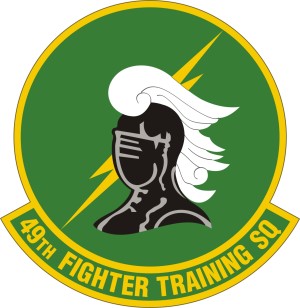
The 49th Fighter Training Squadron is part of the 14th Flying Training Wing based at Columbus Air Force Base, Mississippi. It operates T-38 Talon aircraft conducting flight training.

The 87th Flying Training Squadron is part of the United States Air Force 47th Flying Training Wing based at Laughlin Air Force Base, Texas. It operates T-38 Talon aircraft conducting flight training.
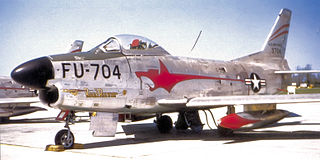
The 97th Flying Training Squadron is part of the 340th Flying Training Group and is the Reserve associate to the 80th Flying Training Wing based at Sheppard Air Force Base, Texas.

The 29th Training Systems Squadron is an active United States Air Force unit. It is assigned to the 753d Test and Evaluation Group, at Eglin Air Force Base, Florida.

The 17th Weapons Squadron is a United States Air Force unit, assigned to the USAF Weapons School at Nellis Air Force Base, Nevada.

The 429th Attack Squadron is a classic associate squadron, stationed at Holloman Air Force Base, New Mexico. It is geographically separated from its parent 926th Wing at Nellis Air Force Base, Nevada.

The 49th Test and Evaluation Squadron is an active United States Air Force unit. Its current assignment is with the 53d Wing, based at Barksdale Air Force Base, Louisiana.
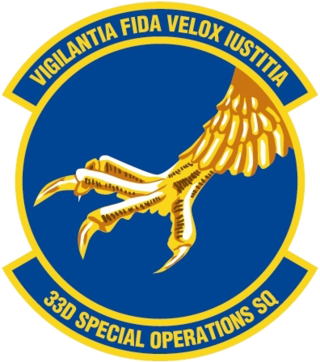
The 33rd Special Operations Squadron is a United States Air Force unit, assigned to the 27th Special Operations Group at Cannon Air Force Base, New Mexico. The squadron operates the General Atomics MQ-9 Reaper.






























